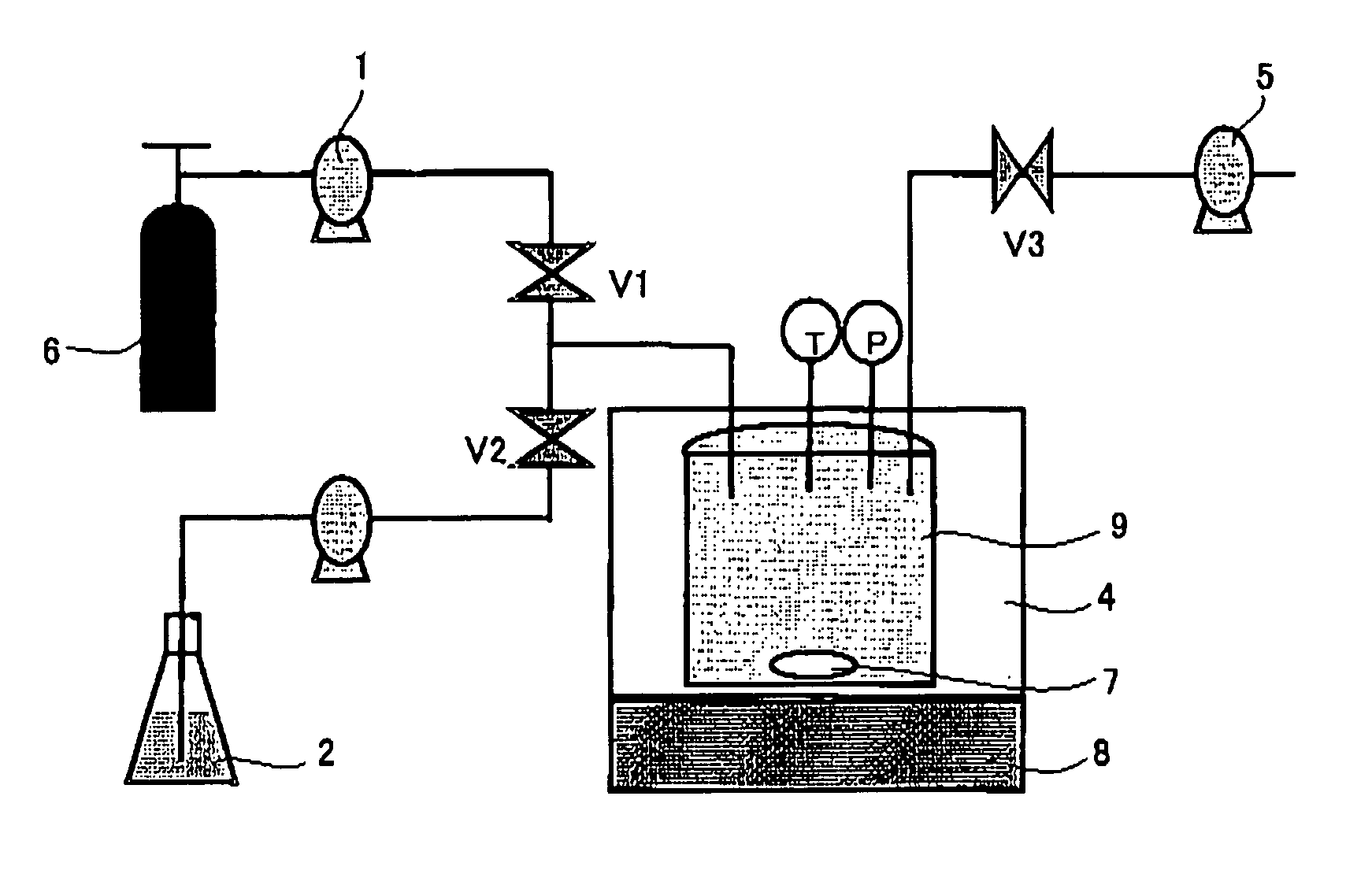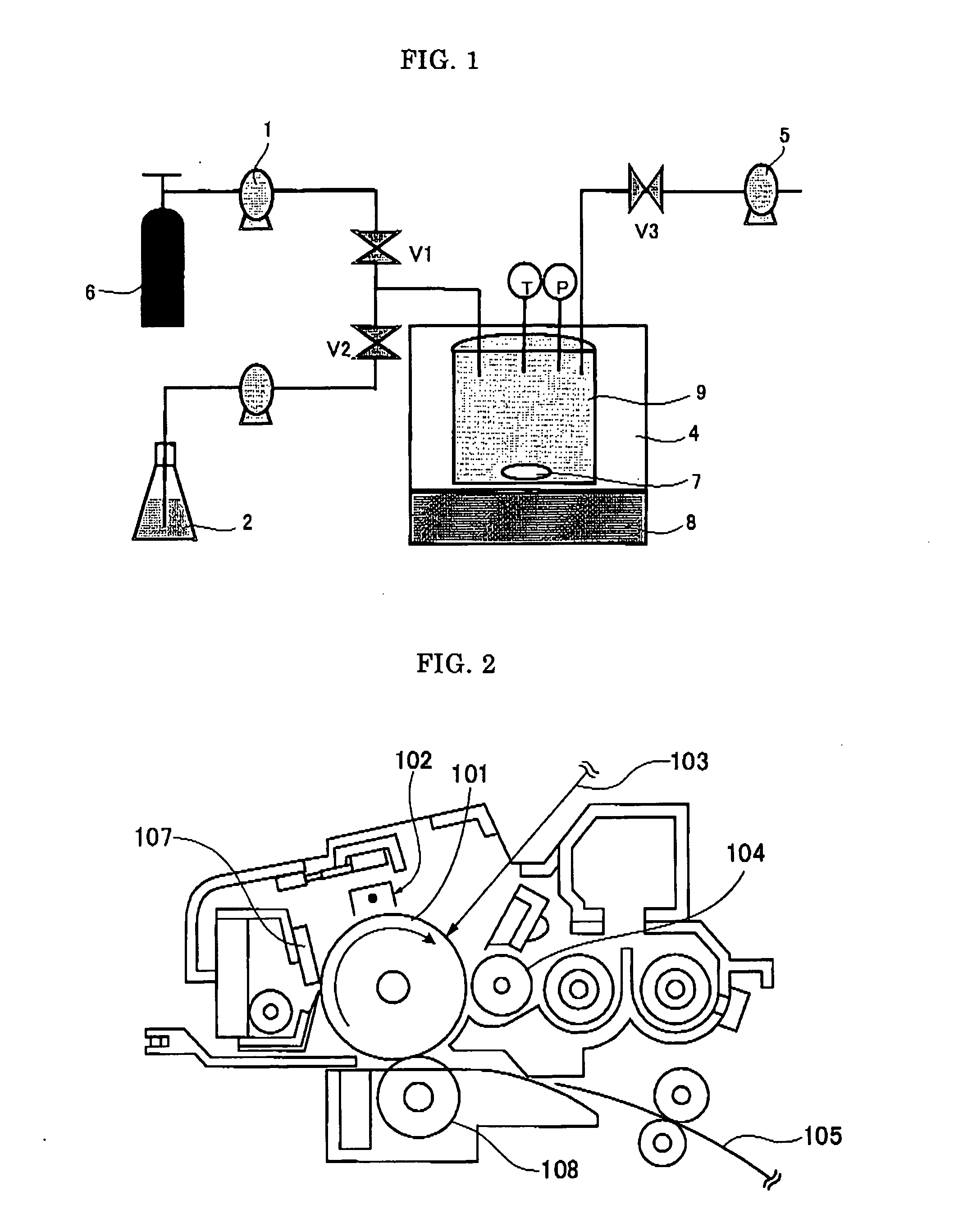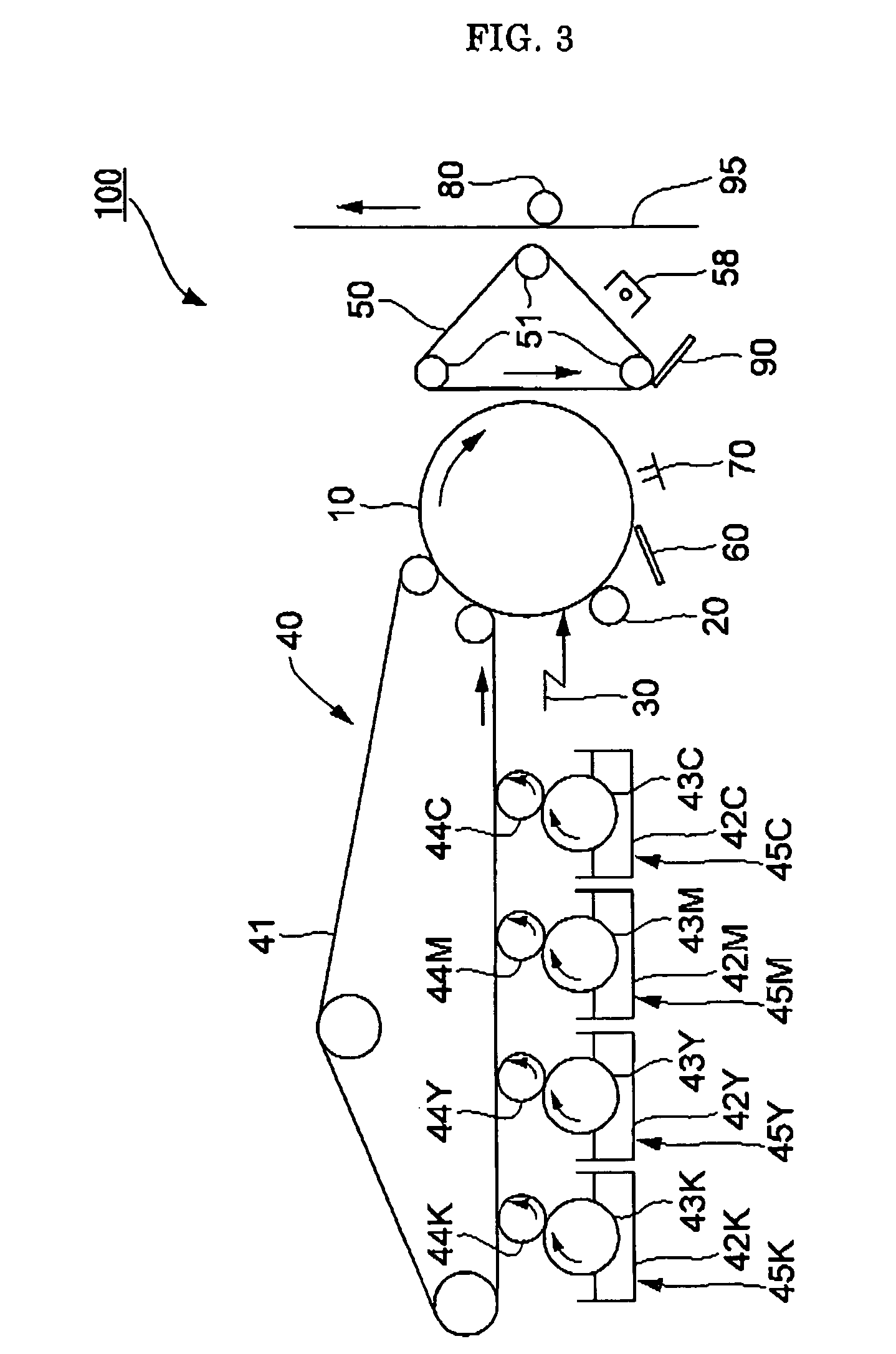Toner, method for producing the same, and image-forming method using the same
a technology of toner and image, applied in the field of toner, can solve the problems of reducing the reducing the shape or structure of toner particles, and reducing the flowability and charging properties of toner particles, so as to ensure a sharp particle size distribution, reduce the effect of waste, and ensure the effect of particle size distribution
- Summary
- Abstract
- Description
- Claims
- Application Information
AI Technical Summary
Benefits of technology
Problems solved by technology
Method used
Image
Examples
synthesis example 1
—Synthesis of Fluorine-Containing Surfactant 1—
[0229] A pressure-resistant reaction cell (internal volume: 1,000 ml) equipped with a stirrer was charged with 500 parts of 1,1-dihydroperfluorooctylacrylate, and 25 parts of V-65 (2,2′-azobis(2,4-dimethylvaleronitrile) produced by Wako Pure Chemical Industries, Ltd.). Carbon dioxide was selected as a supercritical fluid and supplied from a gas container to the pressure-resistant reaction cell. The cell pressure was controlled to 20 MPa using a pressure pump, and the cell temperature was controlled to 65 ° C. using a temperature controller, allowing a reaction to take place for 24 hours with agitation. After termination of the reaction, the pressure-resistant reaction cell was cooled to 0 ° C. and brought to atmospheric pressure using a back pressure valve to obtain “Fluorine-Containing Surfactant 1”.
[0230] The mass-average molecular mass of the obtained Fluorine-Containing Surfactant 1 was 15,000 as measured by the following condition...
synthesis example 2
—Synthesis of Fluorine-Containing Surfactant 2—
[0240] A pressure-resistant reaction cell (internal volume: 1,000 ml) equipped with a stirrer was charged with 250 parts of 1,1-dihydroperfluorooctylacrylate, 250 parts of styrene, and 2 parts of AIBN (2,2′-azobisisobutyronitrile produced by Wako Pure Chemical Industries, Ltd.). Carbon dioxide was selected as a supercritical fluid and supplied from a gas container to the pressure-resistant reaction cell. The cell pressure was controlled to 30 MPa using a pressure pump, and the cell temperature was controlled to 85 ° C. using a temperature controller, allowing a reaction to take place for 24 hours. After termination of the reaction, the reaction cell was cooled to 0 ° C. and brought to atmospheric pressure using a back pressure valve to obtain “Fluorine-Containing Surfactant 2”.
[0241] The mass-average molecular mass of the obtained Fluorine-Containing Surfactant 2 was 140,000 as measured by the same manner to that described in the Synth...
synthesis examples 3 to 13
—Synthesis of Fluorine-Containing Surfactants 3 to 13—
[0242] Except that the fluorine-containing monomer and copolymerizable monomer in Table 1 were used in stead of the fluorine-containing monomer and copolymerizable monomer in Synthesis Example 2, Fluorine-Containing Surfactants 3 to 13 (compound examples 3 to 13) were synthesized in the same manner to that described in Synthesis Example 2. The mass-average molecular mass of the obtained Synthesis of Fluorine-Containing Surfactants 3 to 13 measured by the same manner to that described in the Synthesis Example 1 are shown in Table 1.
TABLE 1CompoundFluorine-ContainingCopolymerizable MonomerCopolymerizableMass-AverageMonomer (parts byExamplesMonomer (parts by mass)(parts by mass)mass)Molecular Mass1——150002—1400003—1070004——2300005——125000649007—1130008—450093100010—880011+113 —28000012——4100013——58000
PUM
| Property | Measurement | Unit |
|---|---|---|
| critical temperature | aaaaa | aaaaa |
| critical pressure | aaaaa | aaaaa |
| temperature | aaaaa | aaaaa |
Abstract
Description
Claims
Application Information
 Login to View More
Login to View More - R&D
- Intellectual Property
- Life Sciences
- Materials
- Tech Scout
- Unparalleled Data Quality
- Higher Quality Content
- 60% Fewer Hallucinations
Browse by: Latest US Patents, China's latest patents, Technical Efficacy Thesaurus, Application Domain, Technology Topic, Popular Technical Reports.
© 2025 PatSnap. All rights reserved.Legal|Privacy policy|Modern Slavery Act Transparency Statement|Sitemap|About US| Contact US: help@patsnap.com



